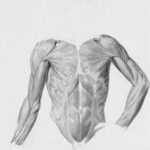![Untitled_design_(2)[1]](https://healthfitnessdecoded.in/wp-content/uploads/2025/06/Untitled_design_21-300x216.jpg)
A Simple Guide to the Balanced Eating Which Will You tell you How Your Plate Should Really look Like?
Nutrition can feel overwhelming, yet one quick hack is simply to eyeball the balance of foods on your plate. Many of us chase fad diets, obsess over macros, or tap calories into an app, when a clear plate rule could work just as well.
Think of your meal as a round pie, then aim to fill the slices like this for lasting energy and good health:
1. A Half Your Plate: Veggies and Fruit
Why? Piled high, these foods flood your meal with vitamins, fiber, and protective plant compounds. They cool inflammation, keep your gut moving, and make it easier to stay at a healthy weight.
What to choose? Fill your haul with every shade. Greens such as spinach, cauliflower is filled with nutrients that’s what all you need.
2. A Quarter of Your Plate: Lean Protein
Why? This macronutrient builds muscle and repairs tissue after a workout, powers your immune cells, and slows hunger. When balanced with carbs, protein also smooths blood-sugar rises and falls, leaving you steady.
What to choose? Whether beans, fish, eggs, grilled chicken, or tofu, pick options low in excess fat. Aim for a palm-sized piece, cooking it simply-roasted, poached, or stir-fried with spices.
3. A Quarter of Your Plate: Whole Grains or Starchy Vegetables
Why? Carbs are your body’s main fuel, and fiber-rich choices keep bowel habits steady and blood sugar calm.
What to choose? Swap white pasta for whole-grain noodles, brown rice, quinoa, or sweet potatoes. Offer just enough so you feel satisfied, then see how your body moves before adding more.
Last, grab a glass of water or herbal tea with a squeeze of lemon. Staying hydrated helps everything else work better, often curbing false hunger.
Try this easy method at your next meal, and notice how simple it is to nourish yourself without stress. You’ll save mental energy and, far more importantly, keep your body humming on what it truly needs.
4. A Quarter of Your Plate: Whole Grains or Starches
Why? Whole grains are really good source of fiber, energy and all the required nutrients. They help maintain healthy blood sugar levels and keep your digestive system running smoothly.
What to choose? Think quinoa, brown rice, whole-wheat pasta, sweet potatoes, or oats. These options are rich in fiber and will provide you with longer-lasting energy compared to refined grains.
5. Healthy Fats (A Small Amount)
Why? Healthy fats are crucial for brain health, hormone regulation, and absorbing fat-soluble vitamins like A, D, E, and K. They also support heart health.
What to choose? Include a small amount of healthy fats from sources like avocados, olive oil, nuts, seeds, or fatty fish like salmon.
6. Hydration: Drink Water
Why? One of the main essential thing required for digestion and nutrient absorption is water. Aim to stay hydrated throughout the day.
What to choose? Water is always the best choice. Herbal teas or infused water with lemon or cucumber can also keep things interesting.
The Key to Success: Balance and Moderation
While these guidelines are a great starting point, remember that balance is key. Every meal should not be perfect, and it’s okay to indulge it sometimes. The goal is to make healthy choices most of the time, so that overall, you’re nourishing your body with a variety of nutrients it needs to thrive.
Pro tip: Pay attention to portion sizes, eat mindfully, and listen to your body’s hunger cues.
Balanced Diet Basics: The Foundation of Healthy Eating
A balanced diet is all about fueling your body with the right mix of nutrients to support your physical and mental well-being. It’s about eating a variety of foods in the right amounts to maintain your health, energy levels, and overall fitness. Here you will find the basics of a balanced diet:
1. The Macronutrients: Carbs, Proteins, and Fats
The necessary nutrients which body needs in enough quantity to function effectively are:
Carbohydrates (45-65% of daily intake)
Why? Carbs are your body’s primary energy source. They fuel your brain, muscles, and organs.
What to choose? Go for complex carbs (whole grains, brown rice, quinoa, oats, legumes, and starchy vegetables like sweet potatoes) instead of refined sugars and processed foods. These provide fiber, slow-releasing energy, and keep you fuller for longer.
Avoid: Sugary drinks, pastries, and refined grains (like white bread and white rice) which can cause blood sugar spikes and crashes.
Proteins (10-35% of daily intake)
Why? Proteins are crucial for building and repairing tissues, making enzymes, hormones, and supporting immune function.
What to choose? Include lean meats (chicken, turkey), fish, tofu, tempeh, eggs, beans, and legumes. Fish like salmon is a great source of omega-3 fatty acids too.
Avoid: Processed meats like sausages, hot dogs, or heavily fried meat products which are high in unhealthy fats and sodium.
Fats (20-35% of daily intake)
Why? Healthy fats are essential for brain function, hormone production, and absorption of vitamins like A, D, E, and K. Not only that they help you to stay satisfied and energetic.
What to choose? You Should focus on unsaturated fats like those are found in fish, like salmon.
Avoid: Trans fats (found in some processed foods) and excessive saturated fats (found in fatty cuts of meat and full-fat dairy).
2. Micronutrients: Vitamins and Minerals
Above nutrients are important for your functioning of body.
Vitamins: Are source of energy production, and supports the immune system too. Examples of some fruits and food which include vitamin C (found in citrus fruits), vitamin D (from sunlight and fortified foods), and vitamin A (in carrots, and sweet potatoes).
Minerals: Help with bone health, nerve function, and fluid balance. Key minerals include calcium (from dairy, leafy greens), potassium (from bananas, potatoes), and iron (from red meat, spinach).
3. Fiber: The Unsung Hero
Why? Fiber Is one of the most important thing which plays an vital role when it comes to digestion not only that it also helps to control the blood sugar levels.
What to choose? Focus on whole foods like vegetables, fruits, legumes, and whole grains. The more fiber-rich foods you include, the better!
4. Water: The Essential Nutrient
Why? Water is very crucial for digestion, nutrient absorption, and overall body function. It helps regulate the body temperature, removes the toxic waste, and keeps your skin looking more healthy.
How much to drink? You should aim to drink at least 8 cups (about 2 liters) or more if you’re actively working. Keep hydrated with herbal teas or water with lemon as well.
5. The Key to Moderation: Portion Control
Eating in large quantity doesn’t mean to be a balanced diet. It’s about balance and moderation. Here are a few tips to ensure your portions are right:
Use your plate as a guide: Fill half of your plate with vegetables, a quarter with lean protein, and a quarter with whole grains or starches.
Listen to your body: Eat when you’re hungry, and stop when you’re satisfied. Avoid eating out of boredom or stress.
Mindful eating: You should always enjoy your food. This helps you recognize when you’re full and prevents overeating.
Putting It All Together: Example of a Balanced Meal
Protein: Grilled chicken breast or baked tofu
Carb: Quinoa or sweet potato
Veggies: Roasted Brussels sprouts, spinach salad with tomatoes
Healthy Fats: A drizzle of olive oil on the veggies or half an avocado on the side
Drink: A glass of water or herbal tea
Summary: What a Balanced Diet Looks Like
Variety is key: Eat a wide range of foods to ensure you’re getting all the necessary nutrients.
Portions matter: You should always listen to your body’s hunger signals and must have meals accordingly.
Whole foods: Focus on whole, minimally processed foods, and limit refined sugars and fats.
Hydrate: Water is just as important as food.


